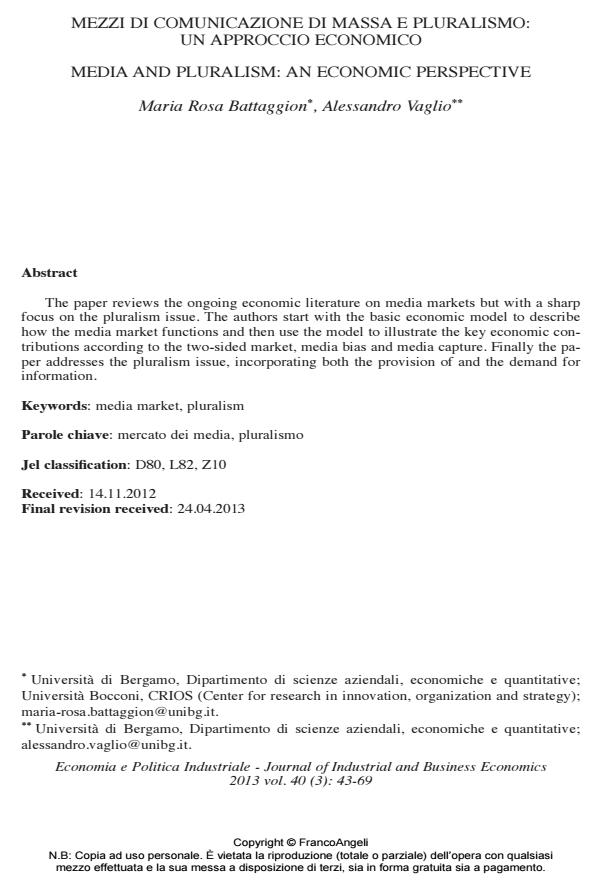Mezzi di comunicazione di massa e pluralismo: un approccio economico
Titolo Rivista ECONOMIA E POLITICA INDUSTRIALE
Autori/Curatori
Anno di pubblicazione 2013 Fascicolo 2013/3
Lingua Italiano Numero pagine 27 P. 43-69 Dimensione file 183 KB
DOI 10.3280/POLI2013-003002
Il DOI è il codice a barre della proprietà intellettuale: per saperne di più
clicca qui
Qui sotto puoi vedere in anteprima la prima pagina di questo articolo.
Se questo articolo ti interessa, lo puoi acquistare (e scaricare in formato pdf) seguendo le facili indicazioni per acquistare il download credit. Acquista Download Credits per scaricare questo Articolo in formato PDF

FrancoAngeli è membro della Publishers International Linking Association, Inc (PILA)associazione indipendente e non profit per facilitare (attraverso i servizi tecnologici implementati da CrossRef.org) l’accesso degli studiosi ai contenuti digitali nelle pubblicazioni professionali e scientifiche
The paper reviews the ongoing economic literature on media markets but with a sharp focus on the pluralism issue. The authors start with the basic economic model to describe how the media market functions and then use the model to illustrate the key economic contributions according to the two-sided market, media bias and media capture. Finally the paper addresses the pluralism issue, incorporating both the provision of and the demand for information.
Parole chiave:Mercato dei media, pluralismo
Jel codes:D80, L82, Z10
, Mezzi di comunicazione di massa e pluralismo: un approccio economico in "ECONOMIA E POLITICA INDUSTRIALE " 3/2013, pp 43-69, DOI: 10.3280/POLI2013-003002